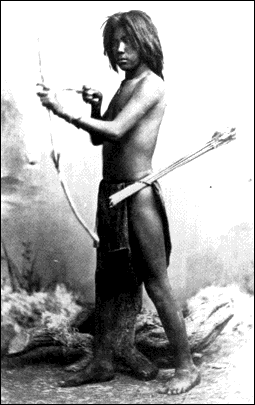Of Early America
Richard White

When force worked, no one --- not the English, the French or the Spanish --- was reluctant to use it, as Timucuans, Pequots, Wampanoags and Natchez could all have testified. Thousands of these peoples not only died: they often died cruelly and gruesomely. North America in the 16th, 17th and 18th centuries was no place for the squeamish. Force often didn't work because Europeans needed Indians, sometimes as trading partners, more often as allies against other Europeans. The accommodation that resulted is not nearly so simple as acculturation or assimilation of Indians to European norms or mutual toleration and coexistence.
Trade provides a nice example of the complexity that Richter has in mind. European manufactures had an immense impact on native North America, but their introduction did not involve a straightforward replacement of native material culture nor was it evidence of a ravenous and indiscriminate Indian appetite for European goods. Indians remained self-sufficient in terms of food and housing all through the colonial period.
They did replace many of their tools and weapons with European manufactures, but sometimes this served only to increase their own manufactures. The acquisition of awls, needles and other European tools, Richter notes, produced a "vast efflorescence of traditional forms that sometimes ... mutated into new --- but indigenously rooted --- patterns."
Even as he describes the ways that Indian and European economies intersected, he insinuates that there was an early Indian dependence on Europeans and draws a sharp line between the basic practices of the two societies. In a book whose theme is initial accommodation, Richter wants to plant the seed of inevitable discord and Indian dependence. "To live as 'Indians,'" he remarks, "native people needed to trade with Europeans." At another point, he declares flatly that
European and Indian ways of using the land could no more share the same ecosystem than could matter and anti-matter share the same space.
In both these statements the particular becomes the universal and what was true at one time is made true of all times. Eventually, most Indians needed access to European goods, but there were ways of acquiring these besides trade, as Richter well knows. There was warfare, and there were gift exchanges and redistribution within and between villages; there were the gifts that European governments had to bestow to maintain alliances. For years the French would subsidise a fur "trade" that brought them pelts they could only sell at a loss in order to maintain the alliances that secured their empire against the far more numerous Indian colonies to their south and east.
Indians and whites often did fail to share the same ecosystem, but this could be because their economies were so similar, not because they were so different. In the Ohio Valley, which hosted some of the bitterest and bloodiest fighting, the economies of back-country whites and Indians were strikingly similar. Both depended on maize agriculture supplemented by livestock raising and hunting (less for food than for trading furs and skins for distant manufacture). In their earliest stages, both societies depended on trading for technologies they couldn't produce.
During the American Revolution, George Rogers Clark, a man without any affection for Indians, admitted to them that they and the colonials shared a common situation.
The Big Knife are very much like the Red people they don't know how to make Blanket powder and cloath &c they buy from the English ... and live chiefly by making corn, Hunting and Trade as you ... do.
The competition over the same resources between very similar societies brought conflict.
Facing East from Indian Country
by Daniel Richter,
The London Review of Books,
21 March 2002